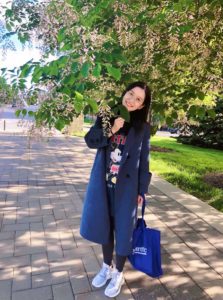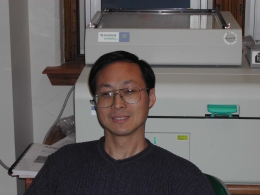Jaehyo Song, Ph. D.
April 9, 2019201 Life Science Center
1201 Rollins Road
University of Missouri
Columbia, MO 65211
Email: jhsong@mail.missouri.edu
Lab Phone No.: (573) 884-4799
EDUCATION
March. 2008 – February. 2018 Doctor of Philosophy (Ph.D.) in Systems biology, Yonsei University, Seoul, Korea.
March. 2003 – February. 2008 Bachelor of Science (BSc) in biology, Yonsei University, Seoul, Korea.
PROFESSIONAL EXPERIENCES
March. 2018 – March. 2019 Postdoctoral fellow, Yonsei University, Seoul, Korea.
PUBLICATIONS
1. Song JH, Kwak SH, Nam KH, Schiefelbein J, Lee MM. 2019. QUIRKY regulates root epidermal cell patterning through stabilizing SCRAMBLED to control CAPRICE movement in Arabidopsis. Nature Communications (Accepted).
2. Yoon EK, Dhar S, Lee MH, Song JH, Lee SA, Kim G, Jang S, Choi JW, Choe JE, Kim JH, Lee MM, Lim J. 2016. Conservation and Diversification of the SHR-SCR-SCL23 Regulatory Network in the Development of the Functional Endodermis in Arabidopsis Shoots. Molecular Plant.
3. Song SK, Ryu KH, Kang YH, Song JH, Cho YH, Yoo SD, Schiefelbein J, Lee MM. 2011. Cell fate in the Arabidopsis root epidermis is determined by competition between WEREWOLF and CAPRICE. Plant Physiology. 1196-208 pp.
4. Jeong YJ, Shang Y, Kim BH, Kim SY, Song JH, Lee JS, Lee MM, Li J, Nam KH. 2010. BAK7 displays unequal genetic redundancy with BAK1 in brassinosteroid signaling and early senescence in Arabidopsis. Molecules and Cells. 259-66 pp.




